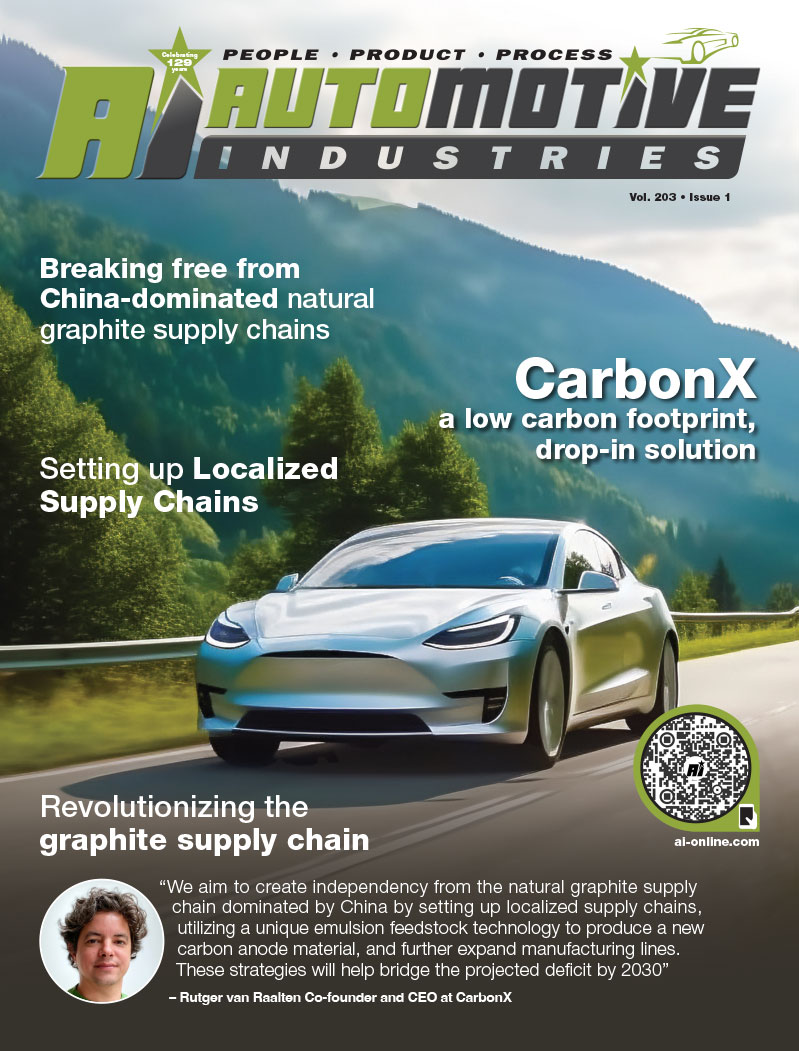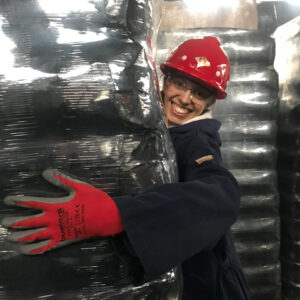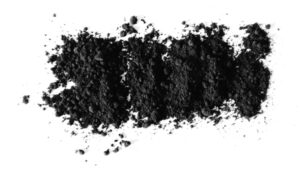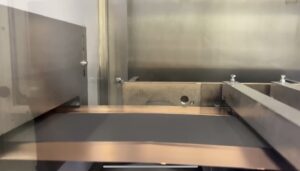
In a transformative era where the automotive industry pivots towards sustainability, CarbonX, under the leadership of Rutger van Raalten (CEO) and Daniela Sordi (CTO), stands at the forefront of revolutionizing the graphite supply chain.
As the Chief Executive Officer, van Raalten addresses critical challenges faced by the electric vehicle (EV) sector, particularly the 1,000 kilotons per annum (KTPA) graphite deficit projected by 2030.
This deficit has become a focal point, inspiring CarbonX to navigate and innovate, breaking free from China-dominated natural graphite supply chains.
In this exclusive interview with Automotive Industries, van Raalten unfolds CarbonX’s strategic vision, emphasizing the creation of localized supply chains, the deployment of emulsion feedstock technology, and the expansion of manufacturing lines.
The CEO sheds light on CarbonX’s commitment to sustainability through partnerships in the United States, European Union, and India, where localized supply chains not only enhance cost-effectiveness but also mitigate the environmental impact associated with traditional graphite production.
Van Raalten delves into the technological differentiators that set CarbonX apart, explaining how their unique emulsion technology contributes to sustainability and cost-effectiveness.
The conversation expands to encompass CarbonX’s impressive performance metrics, including specific capacity, cycle life, and charge rates, and outlines the company’s ambitious plans for optimization and advancement in product specifications.

As the discussion progresses, van Raalten provides insights into CarbonX’s roadmap, foreseeing full graphite substitution by 2025.
Joint development initiatives and strategic collaborations with EV original equipment manufacturers (OEMs) and cell manufacturers take center stage, emphasizing the company’s commitment to scaling operations to meet the burgeoning demand for its revolutionary products.
Now, let us dive into the conversation to explore how CarbonX’s innovative approach is poised to redefine the landscape of electric vehicle batteries and address the pressing challenges of the graphite supply chain.
Automotive Industries (AI): With the rising demand for electric vehicles and the graphite supply chain forming a critical bottleneck, how does CarbonX plan to address and alleviate the current 1,000 KTPA graphite deficit by 2030?
Van Raalten: We aim to create independency from the natural graphite supply chain dominated by China by setting up localized supply chains, utilizing a unique emulsion feedstock technology to produce a new carbon anode material, and further expand our manufacturing lines.
These strategies will help bridge the projected deficit by 2030.
AI: Localized supply chains: CarbonX emphasizes locally sourced and cost-effective production through carbon black manufacturing partnerships in the US, EU, and India. How will these localized supply chains contribute to sustainability and cost-effectiveness in the context of the global demand for electric vehicle batteries? Mining of natural graphite is associated with high carbon emissions, estimated at six tons of CO2 per ton of carbon. Synthetic graphite is even worse as it requires a slow high temperature manufacturing process, producing more than 14 tons of CO2 per ton of carbon. Another critical factor is logistics, as the majority of graphite is shipped from China to battery manufacturing sites across the world.
Van Raalten: CarbonX is produced as an alternative to graphite making use of local carbon black manufacturing facilities.
The manufacturing process is fast and operates at much lower temperatures than synthetic graphite, corresponding to an estimated cradle-to-gate carbon footprint that is five times lower compared to synthetic graphite.

Additionally, a large portion of the logistic costs and carbon emissions are cut out by producing in the vicinity of our client’s Gigafactories.
AI: Technology differentiation: CarbonX’s production process boasts lower reactor temperatures and higher efficiency compared to traditional synthetic graphite methods. How does emulsion technology contribute to the sustainability and cost-effectiveness of CarbonX as a drop-in alternative to graphite?
Van Raalten: CarbonX emulsion technology works as a blueprint to form a unique 3D network carbon structure, instead of carbon black spheres.
We are able to run a fast, relatively low temperature process to create the preferred 3D network structure by using a catalyst and emulsion template to pre-arrange carbon molecules in the feedstock before entering the reactor.
This significantly reduces manufacturing costs with low carbon emissions.
Unlike regular carbon black, the obtained porous network structure of CarbonX is able to store lithium ions while effectively conducting electrons via the connected filaments.
Most importantly, the structure is highly compressible, giving rise to high volumetric energy densities.
Automotive Industries: Performance Metrics: How does CarbonX plan to further optimize the performance metrics such as specific capacity, and cycle life. What advancements are expected in your product specifications?
Van Raalten: Current CarbonX grades are developed to replace natural and synthetic graphite in blends, substituting a majority of the anode active material.
CarbonX works in close collaboration with industry with three joint-development programs covering: fast-charge, energy density and sustainability. The Fast-Charge Program focuses on modifying the CarbonX structure to facilitate transportation of high densities of electrons and lithium-ions. The current state-of-the-art already shows good performance at 10C (6min).
The Energy Density Program focuses on embedding of silicon via different routes into the 3D porous structure. By embedding 10%wt of silicon we aim to

reach an energy density of 750 Wh/L by 2025, going towards tripling that (1,500 Wh/L) by 2035.
Last but not least, CarbonX is running an extensive sustainability program using waste oil feedstock from either end-of-life tires or biomass to produce a 100% circular product.
Automotive Industries: Roadmap and Collaboration: The roadmap for CarbonX includes full graphite substitution by 2025 and strategic partnerships to supply gigafactories in the EU, US, and India. Could you share more details on the joint development initiatives and strategic collaborations that CarbonX envisions to achieve its roadmap goals? How does CarbonX plan to ensure the scalability of its operations to meet the increasing demand for its products?
Van Raalten: CarbonX is closely collaborating with EV OEMs and cell manufacturers to validate performance of substituting graphite as anode active material. Strategic sourcing is discussed in joint partnership with regional carbon black manufacturers in either Europe, US and also India.
This three-way partnership reduces geopolitical dependency and direct sourcing from China.
With the IRA/FEOC in US and Critical Raw Materials Act in Europe, we foresee a direct route for expanding existing carbon black manufacturing capacity in the wake of increasing demand of anode active materials for EVs.




More Stories
Some Ways How Motorists End Up in Collisions at U-Turns
Maximise Margins with Proven PPF Tactics
Finding the Car Boot Release Button – Tips and Tricks